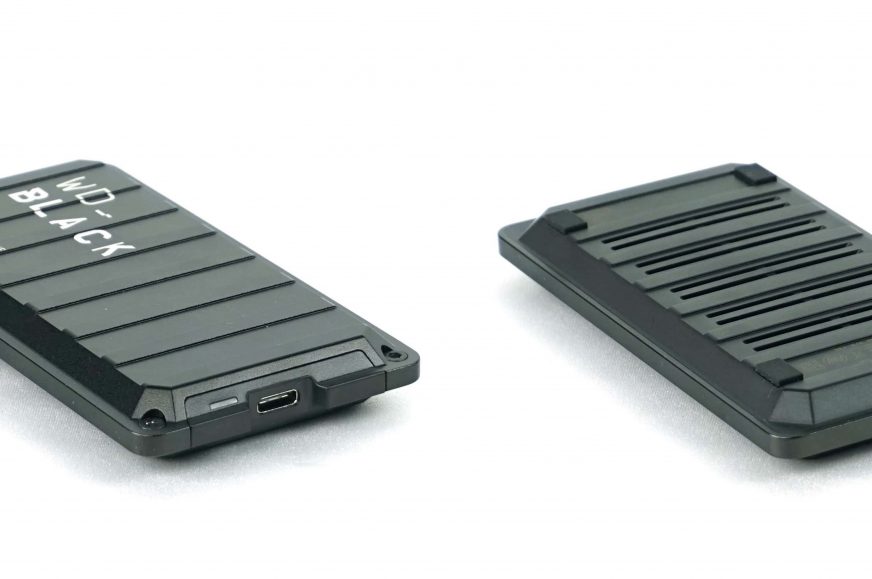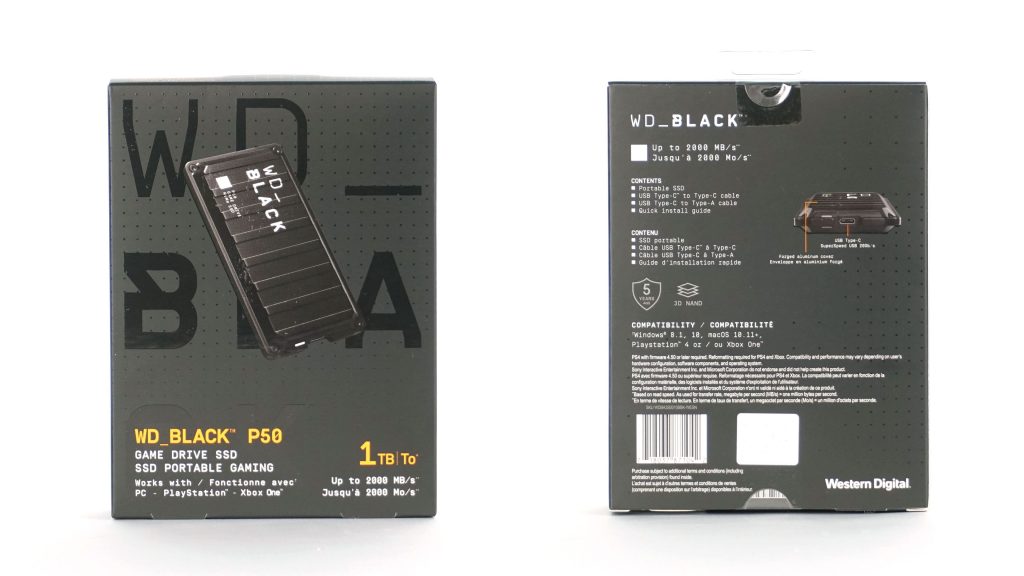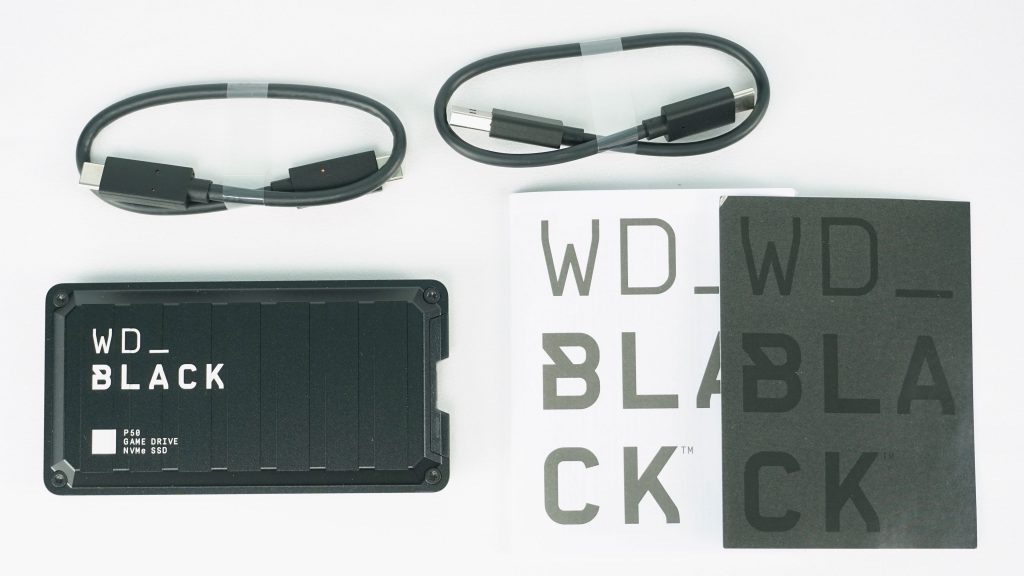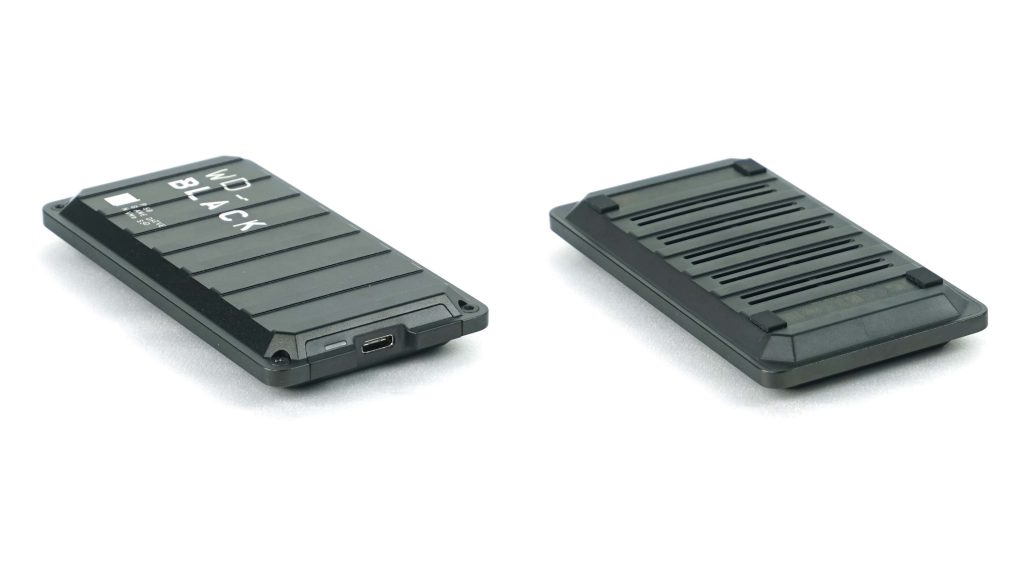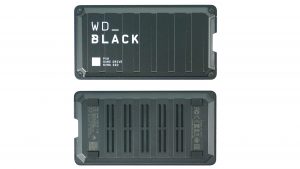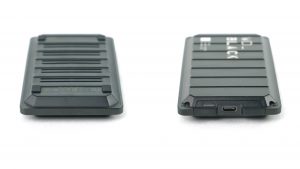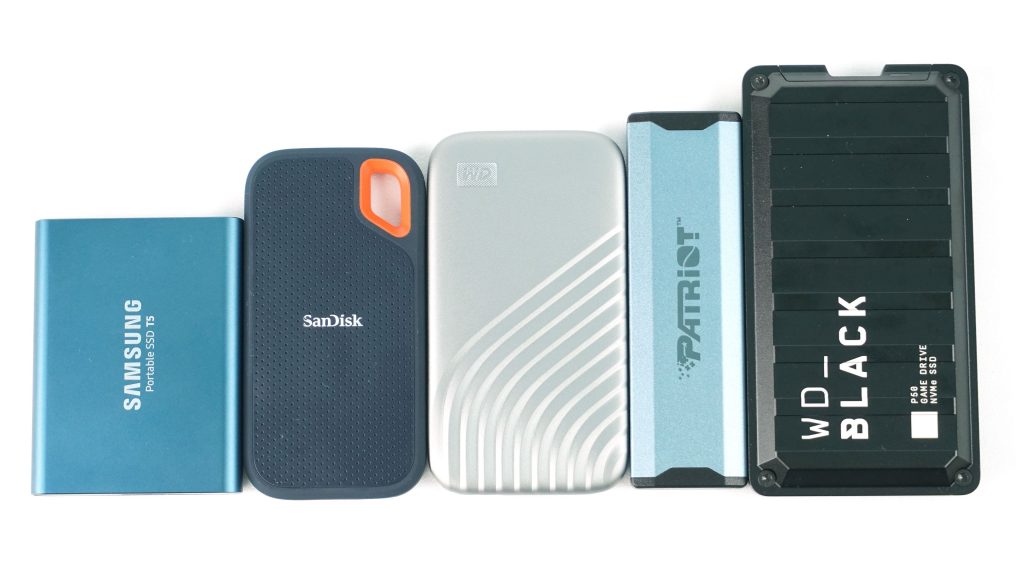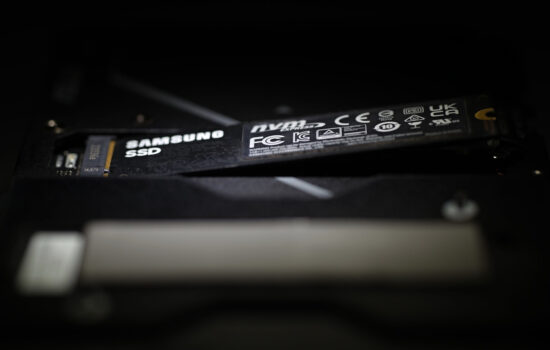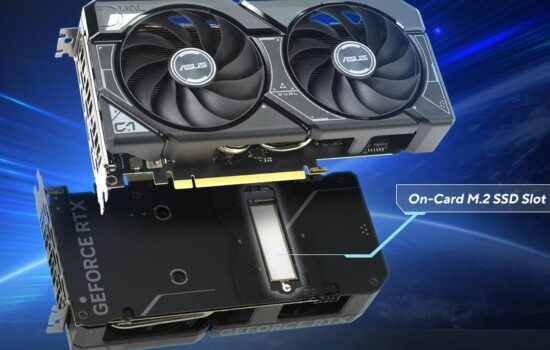Overview
I first saw this novelty called P50 Game Drive last September during our visit to Berlin at IFA 2019. In addition to its non-traditional design, this external SSD is particularly interesting for its unique connection. This is one of the first storage disks to use the fastest form of the USB protocol labelled as 3.2 gen 2×2 , which offers speeds of up to 20 Gbps. Until the arrival of the 4.0 standard, this is the fastest universally available USB.
P50 Game Drive SSD
So far, perhaps the most interesting package of an external SSD has an interesting dotted pattern, a glossy black name and also a representation of the SSD itself. There are also basic specifications such as speed, warranty, etc.
In the package you will find the SSD itself, a pair of cables with USB-C and USB-A and short documentation. The SSD uses a USB 3.2 gen 2×2 with a throughput of 20 Gbps for transfers. However, it is not the fastest port, that is still Thunderbolt 3 or the newly introduced Thunderbolt 4 (both 40 Gbps). The new USB 4.0 will offer the same 40 Gb speed, but until then, 20 Gbps is the fastest universal connection. Unlike Thunderbolt drives, it is compatible with all versions of USB and you can use it not only on Windows and macOS, but also on Playstation or Xbox and mobile devices.
The design of the SSD is clearly different from the other models we’ve had here. The P50 has a hardened aluminum body with a robust design that resembles durable drives, so it’s no ssuurprise that the manufacturer states increased impact resistance. Unfortunately, water resistance as in the case of SanDisk Portable SSD is no longer mentioned.
The metal body has rubber feet on the bottom so that it does not slip on the table. Apart from the USB-C port and the white LED indicator, there are no other elements on it. The already mentioned ribbed outer cover is unconventional. A disadvantage of the black design will certainly be its proneness to fingerprints, dust, but also scratches.
A comparison with other already tested external SSDs shows us that the P50 is the largest and most robust of them. The weight of 112 grams proves it. For comparison, most SSDs are in the range of about 40–50 grams. Thus, the P50 will be more suitable for home use than for everyday carrying in a pocket or the like.
Like the My Passport SSD, the P50 handled our 300 GB continuous write test with a stable speed of around 680 MB/s without any problems. This is due to the SanDisk BiCS 3 64L 3D TLC NAND memory.
Testing took place on the Z490 platform, specifically on the MSI MEG Z490 Ace motherboard with Intel Core i9-10900K and 32 GB 3600 MHz DDR4 Corsair Dominator Platinum, from which 25 GB was allocated for RAM disk.





